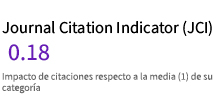Stanley Kubrick y la espiral del tiempo
DOI:
https://doi.org/10.24310/Fotocinema.2016.v0i12.6045Abstract
El concepto de tiempo ha suscitado diversos debates y discusiones en diferentes campos del conocimiento, entre ellos, el de la filosofía, que ha intentado conceptualizar y formular teorías que expliquen este fenómeno. La aparición del cine a finales del siglo XIX ha permitido trasladar el debate sobre la naturaleza del tiempo hacia este medio, debido a su capacidad para producir imágenes en movimiento. Cineastas como Stanley Kubrick han intentado trasladar una visión filosófica personal acerca del tiempo en sus films, aportando un material interesante para el análisis. Esta investigación pretende determinar las visiones filosóficas acerca del tiempo en el cine, en este caso en la película El resplandor (The Shining, Kubrick, 1980), largometraje realizado a partir de la adaptación de la novela homónima de Stephen King (2012) que ha significado un hito del género de cine de terror.
Abstract:
The concept of time led to debates and discussions in different fields of knowledge, including that of philosophy, which has tried to conceptualize and theorize to explain this phenomenon. The emergence of cinema in the late nineteenth century has allowed to switch the debate on the nature of time in to this medium, because of its ability to produce images in motion. Filmmakers like Stanley Kubrick have tried to portrait a personal philosophical view about the time in his films, providing an interesting material for analysis. This research aims to determine the philosophical views about time in film, in this case in the film The Shining (Stanley Kubrick, 1980), a film made from the adaptation of the novel by Stephen King (2012) that has meant a milestone of the genre of horror.
Palabras clave:
Tiempo; filosofía; Deleuze; Kubrick; análisis; cine.
Keywords:
Time; Philosophy; Deleuze; Kubrick; Analysis; Cinema.Downloads
Metrics
Downloads
Published
How to Cite
Issue
Section
License
All contents published in Fotocinema Revista científica de cine y fotografía are protected under the Creative Commons Attribution-NonCommercial-ShareAlike 4.0 International (CC BY-NC-SA 4.0) license. All about this license is available in the following link: <http://creativecommons.org/licenses/by-nc-sa/4.0>
Users can copy, use, redistribute, share and exhibit publicly as long as:
- The original source and authorship of the material are cited (Journal, Publisher and URL of the work).
- It is not used for comercial purposes.
- The existence of the license and its especifications are mentioned.
There are two sets of authors’ rights: moral and property rights. Moral rights are perpetual prerogatives, unrenounceable, not-transferable, unalienable, imprescriptible and inembargable. According to authors’ rights legislation, Fotocinema. Revista científica de cine y fotografía recognizes and respects authors moral rights, as well as the ownership of property rights, which will be transferred to University of Malaga in open access. The property rights are referred to the benefits that are gained by the use or the dissemination of works. Fotocinema. Revista científica de cine y fotografía is published in an open access form and it is exclusively licenced by any means for doing or authorising distribution, dissemination, reproduction, , adaptation, translation or arrangement of works.
Authors are responsable for obtaining the necessary permission to use copyrighted images.













13.png)



